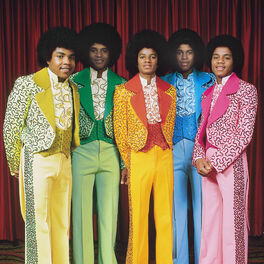Michael Jackson Deezer
Abstract:
Produced by Quincy Jones for Quincy Jones Productions Co-Produced by Michael Jackson Recorded and mixed by Bruce Swedien using the Acusonic Recording Process Technical Engineer: Matt Forger Assistant Engineer: Steve Bates Assistant Sound Sources Recorded by Humberto Gatica and Matt Forger Additional Sound Sources Recorded at Ocean Way Recording Studios, Los Angeles, CA Assistant. Michael Jackson Radio plays music from Michael Jackson and similar artists. Artists In This Station Rihanna. Stations Similar To Michael Jackson Radio 90s Billboard Hits. Add photoBad is one of Michael Jackson's songs in the albums, Bad, HIStory: Past, Present and Future, Book I, and Bad 25. Bad was released on September 7, 1987 by Epic Records and was recorded on January 1987. This song was written, composed, and co-produced by Michael Jackson and produced by Quincy Jones. Michael Jackson stated that this song was influenced by a real life story he read about. Note: Deezer HiFi subscribers can contact us on a d edicated Deezer Support email hifisupport@deezer.com. To get started, you'll need a Deezer HiFi subscription and an adequate broadband internet connection. Deezer HiFi requires a minimum broadband speed of 5 Mb/s to enjoy FLAC streaming.
This month’s MJ Studies Today column looks at Michael Jackson’s skill as a balladist. From his childhood recordings of songs like “Who’s Loving You” to his adult career and material such as “Smile” and “You Are Not Alone”, Jackson’s ability to bring feeling and soul to the slower material in his catalogue was praised by those who witnessed the amount of work and preparation he put into each recording.
Column by Kerry Hennigan, editor of the monthly newsletter, A Candle for Michael, administrator of the widely-subscribed Facebook group “Michael Jackson’s Short Film ‘Ghosts’” and MJ blogger.
REFERENCE AS:
Hennigan, Kerry. “MJ Studies Today LVIII (14-10-2020).” The Journal of Michael Jackson Academic Studies 7, No. 2 (2020). https://michaeljacksonstudies.org/mj-studies-today-lviii
The Journal of Michael Jackson Academic Studies asks that you acknowledge The Journal of Michael Jackson Academic Studies as the source of our Content; if you use material from The Journal of Michael Jackson Academic Studies online, we request that you link directly to the stable URL provided. If you use our content offline, we ask that you credit the source as follows: “Courtesy of The Journal of Michael Jackson Academic Studies”.
Feeling and Soul: Michael Jackson and the art of ballad singing Part 1. By Kerry Hennigan
When you hear Michael Jackson’s music played on the radio or in places like pubs and shopping malls, chances are you hear tracks like “Don’t Stop Till You Get Enough,” “Wanna Be Startin’ Somethin’”, “Black or White” or something equally upbeat. With a few exceptions, we rarely hear the King of Pop’s ballads played; it’s almost as if his outstanding qualities as a balladist have been overlooked. Yet these are the tracks that are most likely to reveal the depth and range of his vocal capabilities.
As Jackson’s ardent fans all know, his adult catalogue contains underappreciated treasures for which the designation of “ballad” can apply. As much as he was praised for his falsetto on “Don’t Stop ‘Til You Get Enough,” his ability to bring emotion to the lyrics of a ballad had been commented on even in his childhood. Whether or not we want to read genuine longing for a regular childhood into his wistful-sounding rendering of songs like “Who’s Loving You” or credit both his innate and learned showmanship, Jackson’s talent for conveying emotions was evident early in his career.
Smokey Robinson, who wrote “Who’s Loving You”, could not believe that Michael was only 10 years old after he heard the Jackson 5 cover of his song. “I quickly went over to him because I wanted to see his birth certificate,” Robinson said at Jackson’s memorial in 2009. “I could not believe that someone that young could have that much feeling and soul. He had to know something to sing a song like that. It was wonderful – as a songwriter that’s a dream come true to have someone sing one of your songs like that.” [1] [2]
Michael’s vocal abilities as an adult benefited from the coaching of Seth Riggs, whose Speech Level Singing method helped the King of Pop to strengthen his range. “Michael had this enormous range. He would go from low E flat to E flats and Gs above high C… In one pitch,” Riggs says. [3] All throughout his career, Jackson cultivated “the melodic, clear and expressive vocality of a tenor but also of a baritone,” Isabelle Stegner-Petitjean writes. She credits veteran sound engineer Bruce Swedien as “co-artist” with Jackson on all the pop icon’s albums from “Off the Wall” (1979) to “Invincible” (2001). This comes as no surprise to fans, most of whom are familiar with the various studio personnel who accompanied Michael on his rise from youthful star to King of Pop to global icon. [4]
Bruce Swedien was the constant component in a crew of often fluid studio personnel, depending on the sound and style Jackson had in mind for a particular track. Michael’s cover version of the Chaplin-Turner-Parsons song “Smile” has been referred to as his greatest vocal performance to be captured in the studio. Swedien describes the recording of the song in his book “In the Studio with Michael Jackson” for which the studio was filled with a 50-piece orchestra – which also performed on the “Childhood” track off the same album: “HIStory, Past, Present and Future: Book 1” (1995).
The orchestra was composed of mainly strings, over which Jackson sang his vocal. After the session, Michael came out to meet the members of the orchestra, and Swedien recalls that they gave him a standing ovation. “Every member of the 50-piece orchestra stood up and tapped their music stands with their bows, as loud as they could! Jeremy [Lubbock, arranger] stood on the conductor’s podium and also applauded as loud as he could! I was applauding, by myself in the control room as loud as I could! Michael was thrilled!” [5]
Sound engineer and drum and synthesizer programmer Peter Mokran, who worked on the R. Kelly-penned love song “You Are Not Alone”, also on the “HIStory” album, witnessed the singer’s routine for recording his vocals. Jackson would always warm up with Seth Riggs – including over the telephone if they were in different cities. “It was very specific – I think it was a set routine – 45 minutes or even an hour – and then he was ready to go immediately after that.” [6]
Mokran explains that Jackson would sing for an hour or two every day and make a composite of the vocal session, to which he would listen. “Every day he would try to beat what was there, so even if he only got one or two words or something that day, he felt that was a successful day. He was really the first guy that I’d ever seen that worked that intensively on it.” Despite the number of times Jackson recorded a vocal, “most of the really great stuff was always in the first one, two or three takes because immediately after his warmup, it just sounded amazing!” Nevertheless, Jackson would keep recording the vocal over and over. [7]

Mokran confirms what many Michael Jackson collaborators have attested since the singer’s passing. “He really was a perfectionist.” [8] The evidence is in the music he left for the world to enjoy long after his passing.
Sources:
[1] YouTube. “Young MJ wowed Smokey Robinson.” Uploaded 7 July 2009. https://youtu.be/TmpElw1pjSY
[2] SongFacts. “Who’s Loving You? The Jackson 5.” https://www.songfacts.com/facts/the-jackson-5/whos-lovin-you
Michael Jackson Deezer Video
[3] Gonsher, Aaron. “Vocal Coach Seth Riggs on Working with Michael Jackson, Ray Charles and More.” Red Bull Music Academy. Published electronically 29 August 2017. https://daily.redbullmusicacademy.com/2017/08/seth-riggs-interview
[4] Isabelle Stegner-Petitjean. “’The Voice in the Mirror’. Michael Jackson: from a vocal identity to its double in sound.” Volume! The French Journal of Popular Music Studies. Vol 3851 pp 222-253. https://journals.openedition.org/volume/3851

[5] Bruce Swedien. In the Studio with Michael Jackson. Hal Leonard Books, 2009: pp 56-58. https://www.amazon.com.au/Studio-Michael-Jackson-Book/dp/B003L1ZYLU/
[6] Brice Najar. Translator: Laetitia LaTouche. “Let’s Make HIStory.” CreateSpace Independent Publishing Platform, 2016: pp 140-146. https://www.amazon.com.au/Lets-Make-HIStory-insight-album/dp/1533296723
[7] Ibid.

[8] Ibid.

Michael Jackson Deezer Album Cover
Illustration:
Michael Jackson Deezer
“Love what you do. Do it well” photo illustration by Kerry Hennigan from a professional photograph of Michael Jackson (photographer unknown). No copyright infringement is intended in this not for profit, educational exercise.
